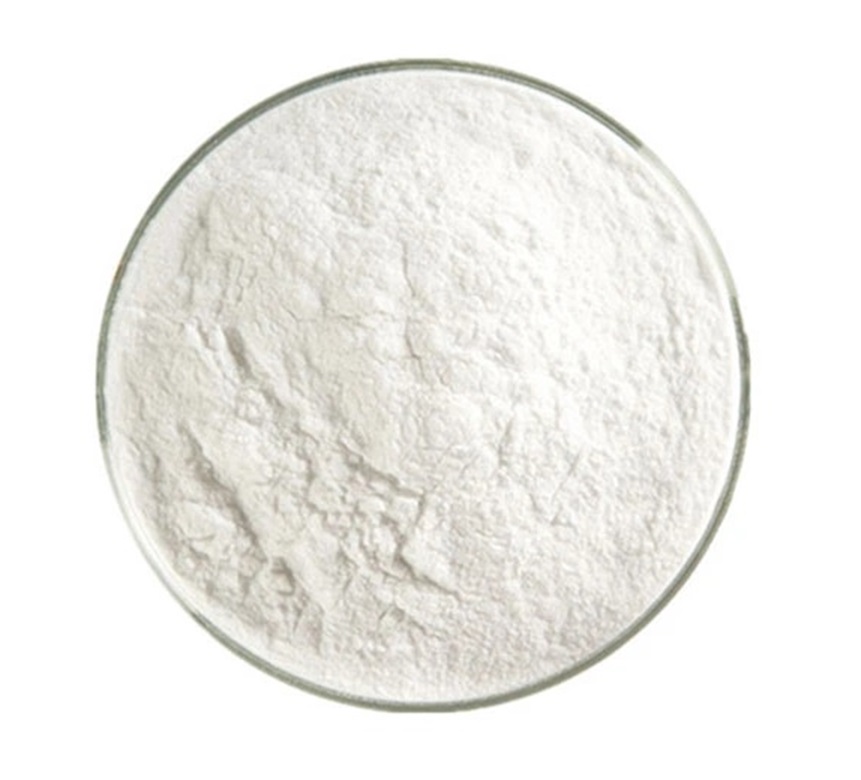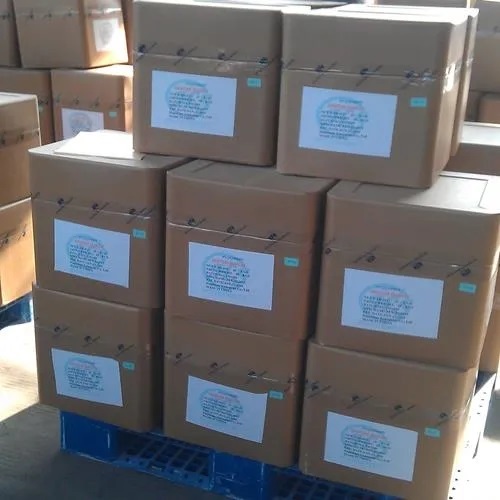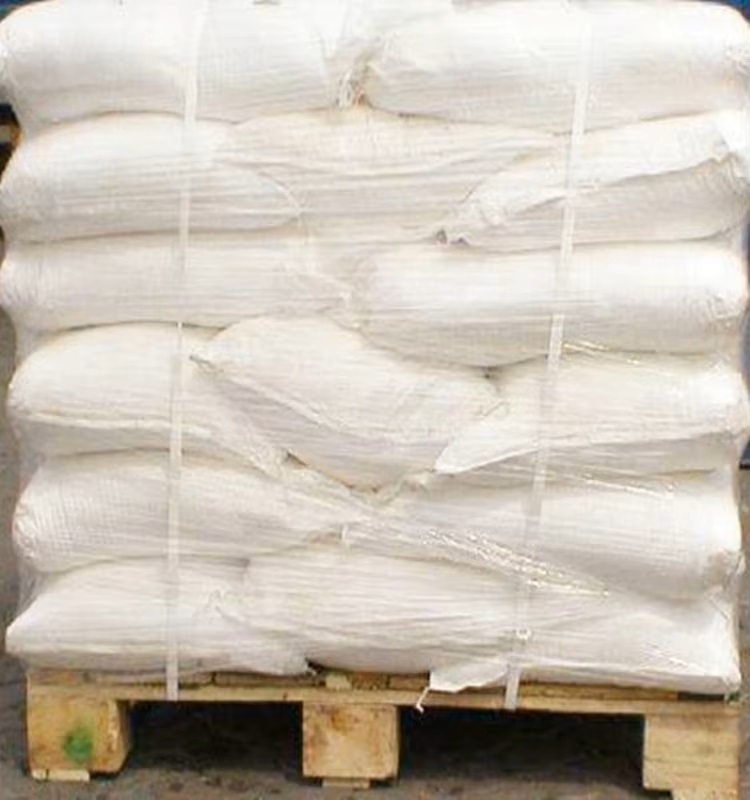We unleash your business potential by maximize the business innovation.
Send EmailE421, Mannitol, D-Mannitol, L-Mannitol, Osmitrol, Manna Sugar, Cordycepic Acid, Sea Crystal, Osmofundin, 69-65-8
L-Mannitol, also known as Mannitol, is a type of sugar alcohol with various applications in the medical, food, and cosmetic industries. Here are some key details:
Properties:
-
Chemical Formula: C6H14O6
-
CAS Number: 69-65-8
-
Molar Mass: 182.17 g/mol
-
Appearance: White crystalline powder or granules
-
Odor: Odorless
-
Solubility: Soluble in water
-
Melting Point: 165-168°C
-
Density: 1.52 g/cm³
Uses:
-
Medical: Used as a diuretic to reduce intracranial pressure and treat kidney failure. It is also used in some medications as a bulking agent.
-
Food Industry: Used as a low-calorie sweetener in sugar-free products.
-
Cosmetics: Used in skincare products for its moisturizing properties.
D-Mannitol, also known simply as Mannitol, is a type of sugar alcohol with various applications in the medical, food, and cosmetic industries. Here are some key details:
Properties:
-
Chemical Formula: C6H14O6
-
CAS Number: 69-65-8
-
Molar Mass: 182.17 g/mol
-
Appearance: White crystalline powder or granules
-
Odor: Odorless
-
Solubility: Soluble in water
-
Melting Point: 165-168°C
-
Density: 1.52 g/cm³
Uses:
-
Medical: Used as a diuretic to reduce intracranial pressure and treat kidney failure. It is also used in some medications as a bulking agent.
-
Food Industry: Used as a low-calorie sweetener in sugar-free products.
-
Cosmetics: Used in skincare products for its moisturizing properties.
D-Mannitol and L-Mannitol are stereoisomers, meaning they have the same chemical formula (C6H14O6) but differ in the spatial arrangement of their atoms. Here are the key differences:
D-Mannitol:
-
Naturally Occurring: D-Mannitol is the naturally occurring form of mannitol.
-
Uses: Commonly used in the pharmaceutical industry as a diuretic and to reduce intracranial pressure. It is also used as a low-calorie sweetener in food products.
-
Properties: D-Mannitol has a specific molecular orientation that makes it suitable for certain medical and food applications.
L-Mannitol:
-
Synthetic: L-Mannitol is the synthetic counterpart of D-Mannitol.
-
Uses: Less commonly used compared to D-Mannitol. It may be used in specialized chemical research and applications.
-
Properties: L-Mannitol has a different spatial arrangement of atoms, which affects its interaction with biological systems and its suitability for various applications.
Mannitol is a type of sugar alcohol with various applications in the medical, food, and cosmetic industries. Here are some key details:
Properties:
-
Chemical Formula: C6H14O6
-
CAS Number: 69-65-8
-
Molar Mass: 182.17 g/mol
-
Appearance: White crystalline powder or granules
-
Odor: Odorless
-
Solubility: Soluble in water
-
Melting Point: 165-168°C
-
Density: 1.52 g/cm³
Uses:
-
Medical: Used as a diuretic to reduce intracranial pressure and treat kidney failure. It is also used in some medications as a bulking agent.
-
Food Industry: Used as a low-calorie sweetener in sugar-free products.
-
Cosmetics: Used in skincare products for its moisturizing properties.
Other Names:
-
E421
-
Osmitrol
-
Manna Sugar
-
Manna Şekeri
-
Deniz Kristali
-
Osmofundin
Molecular Formula (Mannitol): C6H14O6
Molecular Weight: 182.17 g/mol
Chemical Name: D-Mannitol
CAS Number: 69-65-8
It has 50% more sweetness than sucrose. This chemical compound is a naturally occurring substance in fruits and vegetables.
It does not have caryonegic properties. It is a hexahydric alcohol derivative. It is also found in mushrooms. Its function in such areas is as a sugar and carbohydrate reserve.
It is a derivative of the sorbitol compound.
E Code: E 421.
Other Names:
Osmitrol
87-78-5
Manna Sugar
Cordyspepic Acid
Sea Crystal
Manitone-S
Osmofundin
Physical and Chemical Properties:
It is in the form of a white crystal powder in physical appearance. It can also be found in granule form.
It has a sweet taste. It has an odor.
Melting point is 168 °C.
Boiling point is between 290 °C and 295 °C.
Mannitol solubility is 216 g/Lt at 25 °C. Its solubility increases when the temperature increases. Its solubility in glycerin is 1g/18 mlt.
Its density is 1.52 gr/cm³ at 20 °C.
Mannitol Usage Areas:
It is used as a basic ingredient in the manufacture of chewable tablets in the pharmaceutical sector thanks to its non-hygroscopic properties.
Mannitol is used in the production of drug-containing gums.
Its sweetening agent feature is used.
It is used in the manufacture of drugs produced to treat swelling around the brain and inside the eyes.
Some people have difficulty producing urine in their bodies. It is used in the manufacture of drugs used to ensure that the body produces urine.
Drugs containing this chemical are given to treat patients with kidney failure. Thanks to these drugs, excess water and toxic substances in the body are removed. Mannitol is used in the manufacture of these drugs.
It is used as an anti-caking agent in the food sector.
It is used as a flavoring agent in the production of nuts.
Sugar alcohols used in the production of antifreeze, namely alcohols such as Mannitol, dextrose, maltitol, sorbitol. With the increase in Dextrose Equivalent, it will increase water activity and inhibition of crystallization of water. In this way, the freezing point will decrease.
It is used as a flavor enhancer.
It is used in very small amounts together with Mono Ethylene Glycol as an anti-wear chemical in vehicle engines.
It is among the chemicals used as a sweetener in chewable tablets.



